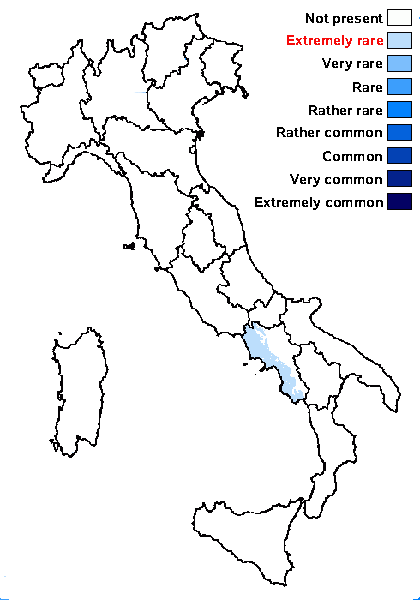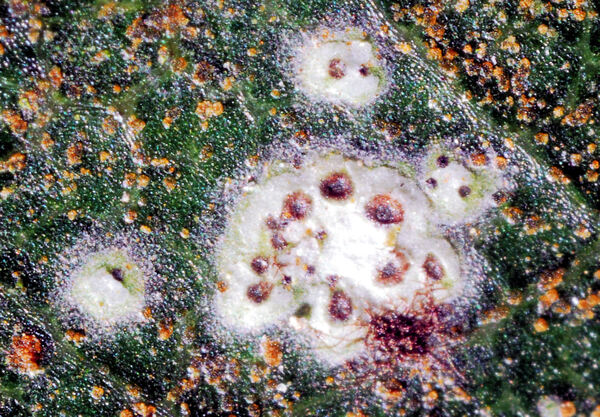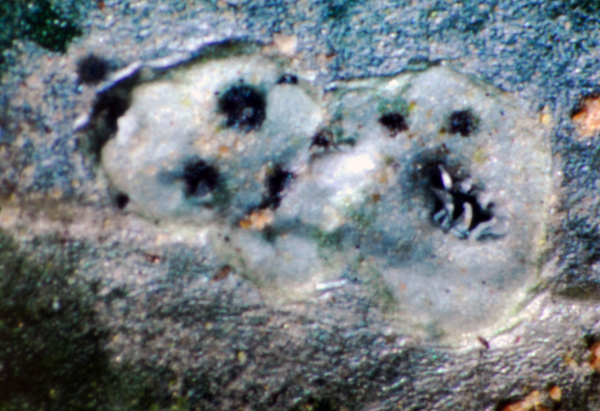Gyalectidium puntilloi Sérus.
in Ferraro & al., Bot. J. Linn. Soc., 137: 341, 2001.
Synonyms:
Distribution: S - Camp (Puntillo & al. 2000, Puntillo 2000, Ferraro & al. 2001, Puntillo & Puntillo 2011, Ravera & al. 2015c).
Description: Thallus crustose, episubstratic, distinctly areolate, with whitish, applanate, polygonal clusters of crystals separated by thin, greenish thalline parts, forming 1-2(-3) mm wide, rounded or irregular patches. Hyphophores submarginal, their scales small, emerging on the outer edges of the areoles, obliquely orientated, squamiform but usually distorted and irregularly laciniate, 0.05-0.08 mm long, 0.07- 0.15 mm broad, pale greyish or whitish, sometimes with a bluish tinge at the base. Apothecia very rare, incompletely developed, rounded, 0.1-0.2(-0.25) mm across, with a pale to brown disc and a prominent, whitish to grey proper margin. Ascospores and pycnidia not known. Photobiont chlorococcoid. Spot tests: thallus K-, C-, KC-, P-, UV-. Chemistry: without lichen substances.Note: a recently-described foliicolous species known only from Southern Italy and the Pyrenees, where it grows in very humid and warm sites. It is included in the Italian red list of epiphytic lichens as “Critically Endangered” (Nascimbene & al. 2013c).
Growth form: Crustose
Substrata: leaves
Photobiont: green algae other than Trentepohlia
Reproductive strategy: mainly asexual, by conidia and thalloconidia
Restricted to humid-warm, oceanic areas
Commonnes-rarity: (info)
Alpine belt: absent
Subalpine belt: absent
Oromediterranean belt: absent
Montane belt: absent
Submediterranean belt: absent
Padanian area: absent
Humid submediterranean belt: extremely rare
Humid mediterranean belt: extremely rare
Dry mediterranean belt: absent

Predictive model
Herbarium samples
Growth form: Crustose
Substrata: leaves
Photobiont: green algae other than Trentepohlia
Reproductive strategy: mainly asexual, by conidia and thalloconidia
Restricted to humid-warm, oceanic areas
Commonnes-rarity: (info)
Alpine belt: absent
Subalpine belt: absent
Oromediterranean belt: absent
Montane belt: absent
Submediterranean belt: absent
Padanian area: absent
Humid submediterranean belt: extremely rare
Humid mediterranean belt: extremely rare
Dry mediterranean belt: absent

Predictive model
| Herbarium samples |
 INDEX FUNGORUM
INDEX FUNGORUM
 GBIF
GBIF





